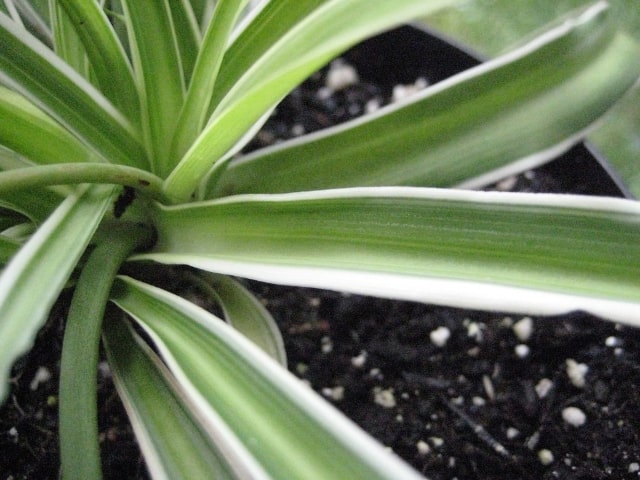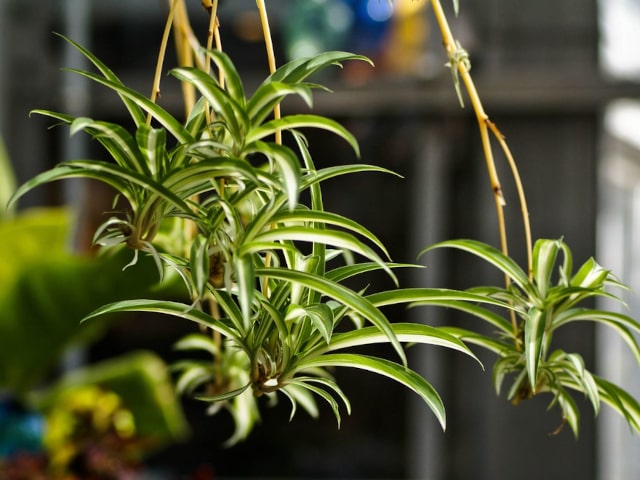
People tend to prefer growing their Spider Plants (Chlorophytum comosun) indoors. These plants thrive in a home and provide a great addition to any living room or another indoor area. Spider Plants are ideal for new gardeners because they are strong and tolerant of many different growing conditions. They are easy to grow and enjoy. Even new gardeners can learn how to take care of Spider Plants without much trouble.
Spider Plants can easily tolerate infrequent watering and low light conditions. They are also great for cleaning indoor air, which adds to their popularity. Another great thing about these plants is that they can be propagated easily and without much effort, by using little spiders that grow from the mature plants' flower stalks. This is a great way to get more plants from one mature plant.
Since Spider Plants are so popular, many people wonder if it is possible to grow them outdoors. They would make great addition to any garden, but is it possible to do this? The good news is that yes, under the right conditions, Spider Plants can be grown outdoors.
Growing Conditions: When to Move Spider Plant Outdoors?
If you wish to grow Spider Plant outdoors, you need to understand what kind of growing conditions this plant needs. While it is a hardy plant that can tolerate many different conditions, it needs warmth to survive.
Keep in mind that Spider Plants are native to South Africa. These are tropical plants that need warm climate to survive. Ideally, they need tropical climate, which is not available in all climate zones. Spider Plants can be grown as perennial plants only in zones 9 to 11. However, they can be grown as annuals in somewhat cooler climate conditions.
One thing to remember is that these plants cannot tolerate any frost. If you wish to grow them as annuals in colder climates, you should wait to plant them until all danger of frost has passed. This is a key growing condition you need to provide for your plants. That is why many people choose to grow Spider Plants outdoors as container plants: keeping them outside during the warmer months and bringing them back inside once it gets colder.
If you live in zones 10 or 11, you can grow Spider Plants without much trouble. Keep in mind that these plants tend to spread quickly and aggressively, so you need to choose a good spot in your garden where they can spread freely.
How to Grow Spider Plants Outdoors
Probably the easiest way to grow your Spider Plant outdoors is to simply take its container and move it from the inside of your home to a patio or garden. Make sure to do this when the weather permits: these plants need warm environment to grow. Similarly, remember to take them back indoors as soon as it gets too cold.
By doing this, you are getting the best of both worlds: a beautiful Spider Plant for your garden in the summer and a gorgeous indoor plant during the cold months.
Spider Plants are excellent choice for hanging baskets, which can also be located outdoors when the weather permits. Its small, star-shaped white flowers cascade down long flower stalks. This can provide a gorgeous display for your balcony or patio in the summer.
Once the flowering has passed, the plant will develop small plantlets on the flower stalks. These hanging plantlets resemble spiders, so this is how the plant got its name. These "spiders" act like the runners on the strawberry plants. They will root easily when they touch soil, quickly creating new Spider Plants.
Keep this in mind if you wish to have more Spider Plants outdoors. Simply remove one of the runners and stick it into the soil. You can plant it in a new container, or, if climate conditions in your area are warm enough, you may even try growing them in your garden. Just make sure that winters in your area are mild so the plant can survive outdoors throughout the year. If not, it would be for the best to grow new plants in their separate containers so you can take them indoors as soon as the weather gets cold.
When grown outside of the container and directly in the garden, Spider Plants will make great groundcovers. They spread easily and can cover a garden area without a problem. Another good way to go is to grow Spider Plants as border around the trees in your garden or a yard.
Another way to grow Spider Plants outdoors or indoors is to use them as trailing plants. This can look great in large container arrangements. You can take such an arrangement outdoors during the warm months and return it to the inside of the home once it gets cold.
Caring for Spider Plants Outdoors
It is not difficult to take care of Spider Plant outdoors, and your care regime should not be much different than caring for this plant indoors. The main thing to remember is to provide your Spider Plant with enough warmth because it can't survive low temperatures or any frost.
It is best to start new Spider Plants indoors and give some time for roots to develop. Make sure to plant them in a well-draining soil that is slightly acidic.
Another thing to keep in mind is that Spider Plant prefers filtered sunlight to thrive. However, you can also grow it in partial shade or even shade. In fact, these plants will easily get sunburnt in full sun or afternoon sun. Keep this in mind when choosing a spot in your garden to plant Spider Plants. These plants thrive in dappled shade, so this is the best spot in a garden.
These plants can tolerate some drought. They have thick rhizomes that store water, protecting the plant from low-water conditions. However, this is not an excuse to forget your plant. You should water it regularly, although you should never leave your Spider Plant to sit in water.
Young Spider Plants need moist soil. They are very sensitive to chlorine and fluoride that can be found in tap water, so it is best to water them with distilled water or rainwater.
These plants don't like too much fertilizer, so keep this in mind when feeding your plants. It is best to use a basic 10-10-10 fertilizer once per month or even once in two months. You shouldn't fertilize more than this.
Keep in mind that keeping Spider Plants outdoors can invite some pests. The most common pests attacking Spider Plants are scale, aphids, spider mites and whiteflies. You should use an insecticidal soap to get rid of these pests. This is particularly important if you keep your Spider Plant in a container and wish to bring it inside during the winter. You can even make your own homemade insecticide by mixing soap dish, mouth wash and water.
In case you wish to grow your Spider Plants outdoors as annuals, you can always dig them up and put them in containers to bring inside during the winter. If there are too many plants for your home, you can give some to your family and friends. They can easily fit in a cup, so they are not too bulky. This is another good way to go if you wish to grow Spider Plants outdoors and protect them during the cold months.
Photo credit: Ventilago




0 Comments